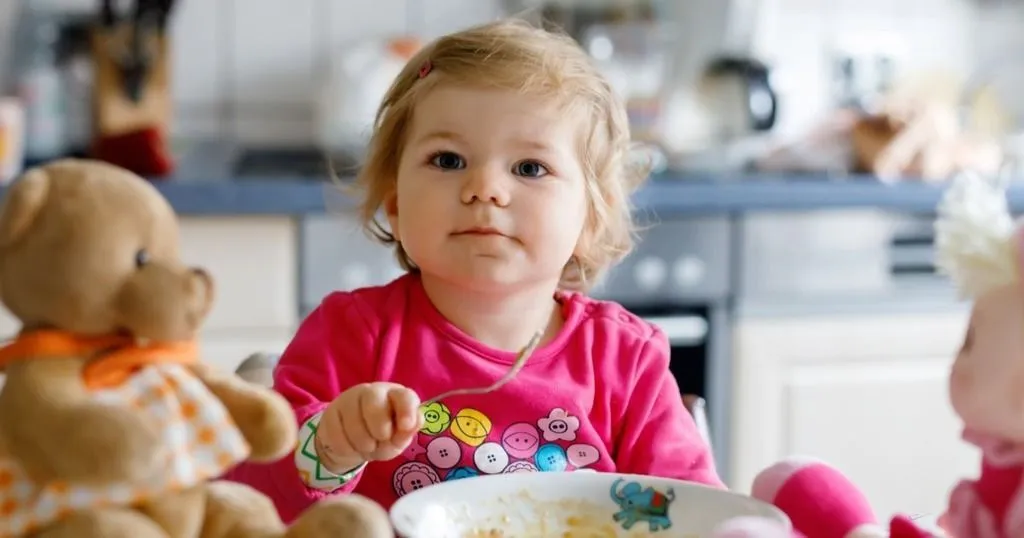The role of mimicry in the development of social communication

Children learn from interacting with others, especially their parents. For example, reproducing the emotions that others express is part of that.
Posted by
Published on
Tue 16 Feb. 2021
Topics
| Child Development | Developmental Psychology | Emotions | Facial Expression Analysis | FACS | The Observer XT | Infants |
Child development is an exciting process to study. Thanks to all kind of research, we have discovered that this development is without any doubt linked to daily living with people. Children learn from interacting with others, especially their parents. For example, reproducing the emotions that others express is part of that.
Mimicry important for social development
You smile at your baby and your baby smiles back! Copying facial expressions is one of the great milestones in the social development of a child. This way, the child learns what is funny and nice and discovers how to communicate non-verbally. Moreover, it fosters social bonding since mimicry tells the other that ‘I am like you’ and ‘I feel you’.
Still, little is known about the mechanisms controlling the early development of emotional mimicry. Therefore, the research team of Eliala A. Salvadori, of the University of Amsterdam, conducted a study to investigate three things:
- Infant emotional mimicry of strangers’ facial expressions and its association with parent emotional mimicry. Emotional mimicry was identified as the time (duration in seconds) when participants displayed positive facial expressions (i.e., smiling) in response to the strangers’ happy faces, and negative facial expressions (i.e., frowning/scowling) in response to the sad, angry, or fearful stimuli.
- Parent-infant mutual attention, which was quantified as the time (duration in seconds) spent by the infant and the parent simultaneously looking at one another.
- Parent dispositional affective empathy, and to what extent this influences the infant mimicry during triadic situations. The triadic situation includes the child, the parent, and the stimulus on screen.
Looking at the parent-child social interaction
Salvadori and her team included 117 infant-parent dyads, living in Amsterdam and surrounding areas. The infants (six- and twelve-month-olds) and one of their parents (mother or father) were presented with dynamic videos of unfamiliar adults showing happy, sad, angry, and fearful faces.
Besides, parents were asked to complete an online questionnaire (Interpersonal Reactivity Index) to measure the tendency to experience feelings of sympathy or concern for unfortunate others.
Interested in parent-child interaction research? This free white paper will show you how to facilitate the study, how to set up your experiment, and analyze your data.Capturing automatic and spontaneous responses on video
The main interest of the study was on the natural development of the triadic social interaction. The researchers wanted to measure the participants’ automatic and spontaneous behavioral responses. Therefore, parents were asked to behave as they would normally do and not to intervene unless the child sought for their attention. The behaviors of the participants were recorded on video.
Emotional stimuli were employed from the Amsterdam Dynamic Facial Expression Set (ADFES), in which facial expressions are based upon prototypes of the “basic emotions” as described in the Facial Action Coding System (FACS). Participants were presented with eight blocks of five videos each. Each block always started with strangers’ neutral face, followed by videos of happy, sad, angry, and fearful facial expressions in a randomized order.
Behavioral coding of emotional communication
In their study, the researchers made use of a microanalytic facial coding system that relied on second-by-second offline coding of the infants and parents. This enabled them to capture micro changes in the facial-expressive behavior that would typically be invisible to the human eye. With that, the measurements showed more information than just assessing the presence (vs. absence) of the mimicry.
The coding system of Colonnesi et al. 2012 was used for emotional communication, which include these categories:
- Facial expressions - identified as positive when involving smiles and raising corners of the lips, and negative when involving frowns or lowered-lip corners.
- Gaze direction - coded as to the stimulus, the screen, the interaction partner, or elsewhere. Whereby must be noted that coding gaze direction to a stimulus was an adaptation of the original coding scheme.
An additional coding category was included to classify the stimuli as neutral, happy, sad, angry, or fearful.
The observational data was coded and analyzed using The Observer XT and the inter-rater reliability was calculated for the six coders who participated in the project.
The influence of emotional stimuli on mimicry
The research team extensively reported about the results of this study in their publication. They found that, in case of:
- Happy stimuli, infant emotional mimicry was positively associated with parent emotional mimicry and affective empathy. The infants who mimic the happy stimuli longer have parents who both mimic longer and score higher levels of affective empathy.
- Sad stimuli, infant emotional mimicry was positively associated with parent-infant mutual attention, indicating that infants who mimic the sad stimuli longer are those who share longer attention with their parents. Also, parents seemed to mimic sad stimuli longer when they showed higher levels of affective empathy.
- Angry or fearful stimuli, unfortunately no significant relation was found.
To automatically analyze the effects of stimuli on facial expressions of infants, the researchers aim to validate Baby FaceReader. Therefore they use a sample of 4- and 8-months-old infants whose facial expressions are already coded with The Observer XT during a study on the development of infant emotional communication with strangers vs. mothers and fathers. Using Baby FaceReader will save them resources, because coding of expressions is done automatically.
Understanding the development of emotional communication in infants
The researchers conclude that only when the emotional stimuli are happy, and thus perceived as affiliative, emotional mimicry occurs as an automatic and spontaneous parent-infant shared behavior. It surprised the researchers that infants’ responses to angry and fearful stimuli did not relate to the dimensions of parent-infant mutual attention, nor to parent emotional mimicry. Perhaps because these emotions are related a threatened feeling and provoke introvert behaviors.
Identifying which factors underpin individual differences in emotional mimicry as early as in the first year of life is the next step towards a better understanding of communicative development.
Reference
Salvadori, E.A.; Colonnesi, C.; Vonk, H.S.; Oort, F.J. & Aktar, E. (2021). Infant Emotional Mimicry of Strangers: Associations with Parent Emotional Mimicry, Parent-Infant Mutual Attention, and Parent Dispositional Affective Empathy. International Journal of Environmental Research and Public Health, 18, 654. https://doi.org/10.3390/ijerph18020654
Related Posts

Facts about FaceReader and automated facial expression analysis

Analyzing the mealtime behaviors of children with autism



